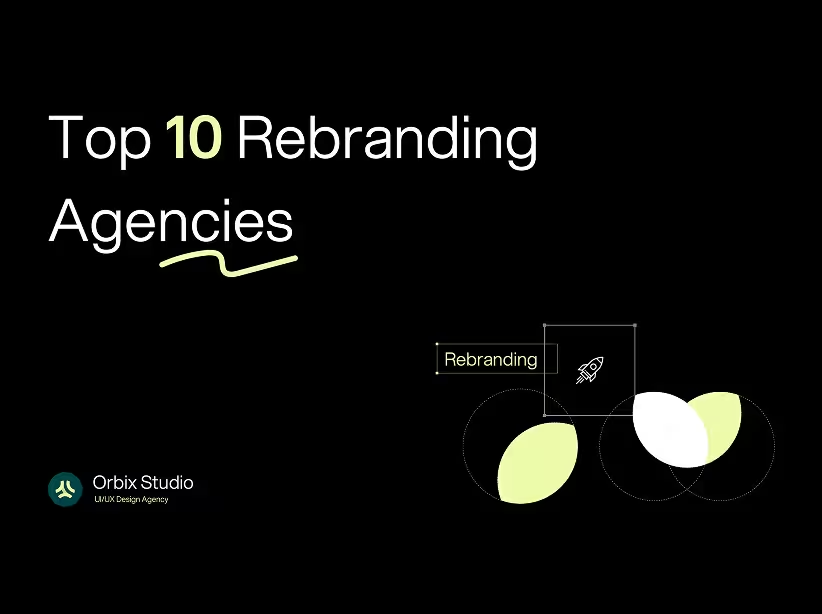Table of Contents
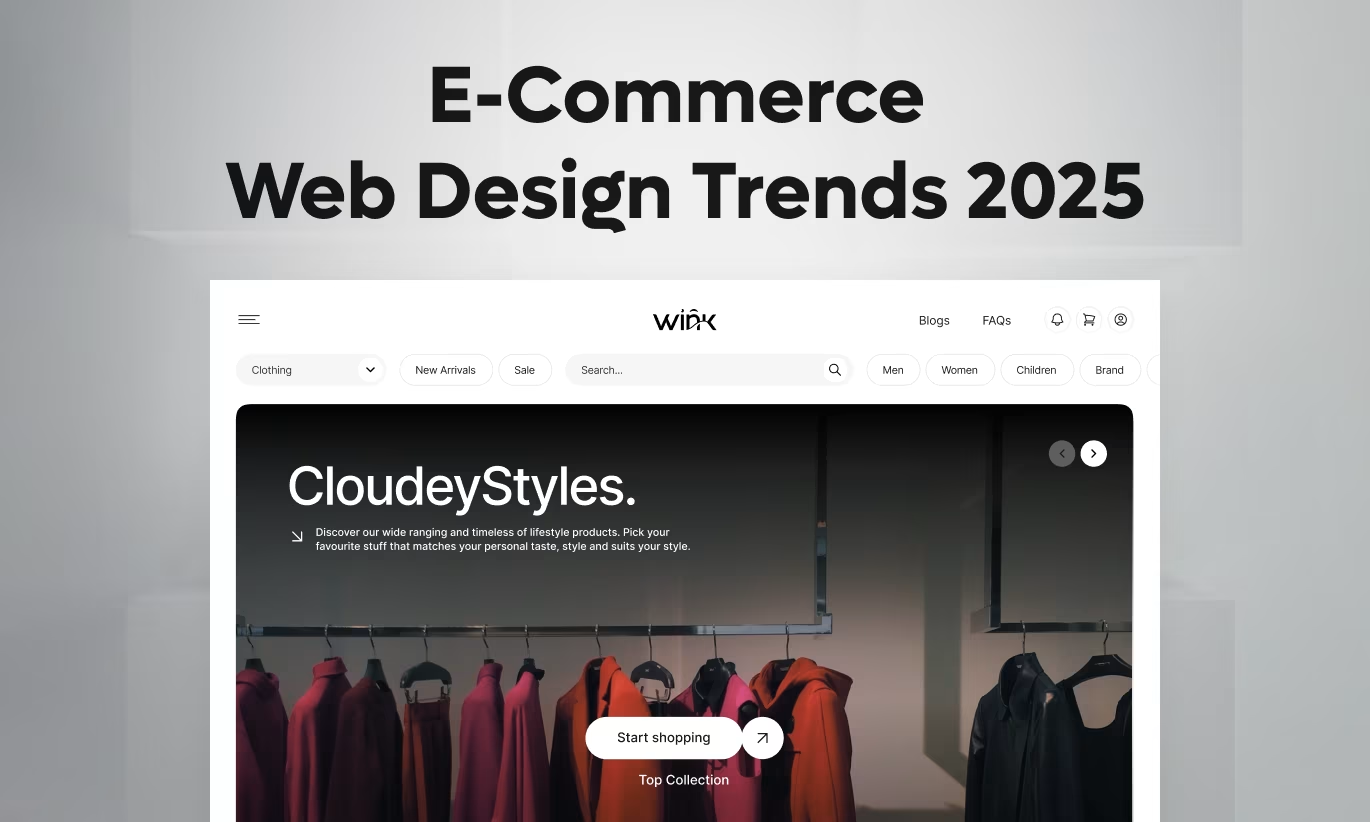
The e-commerce landscape is more competitive than ever. With global online sales projected to reach $7 trillion in 2025, startups need every advantage to stand out. Your website design isn't just about aesthetics—it's a conversion tool that can make or break your business.
Modern consumers expect seamless, engaging experiences that combine stunning visuals with flawless functionality. The web design trends shaping e-commerce in 2025 prioritize speed, personalization, and immersive experiences that build trust and drive sales.In this guide, we'll explore the most impactful web design trends for e-commerce startups and show you how to implement them effectively.
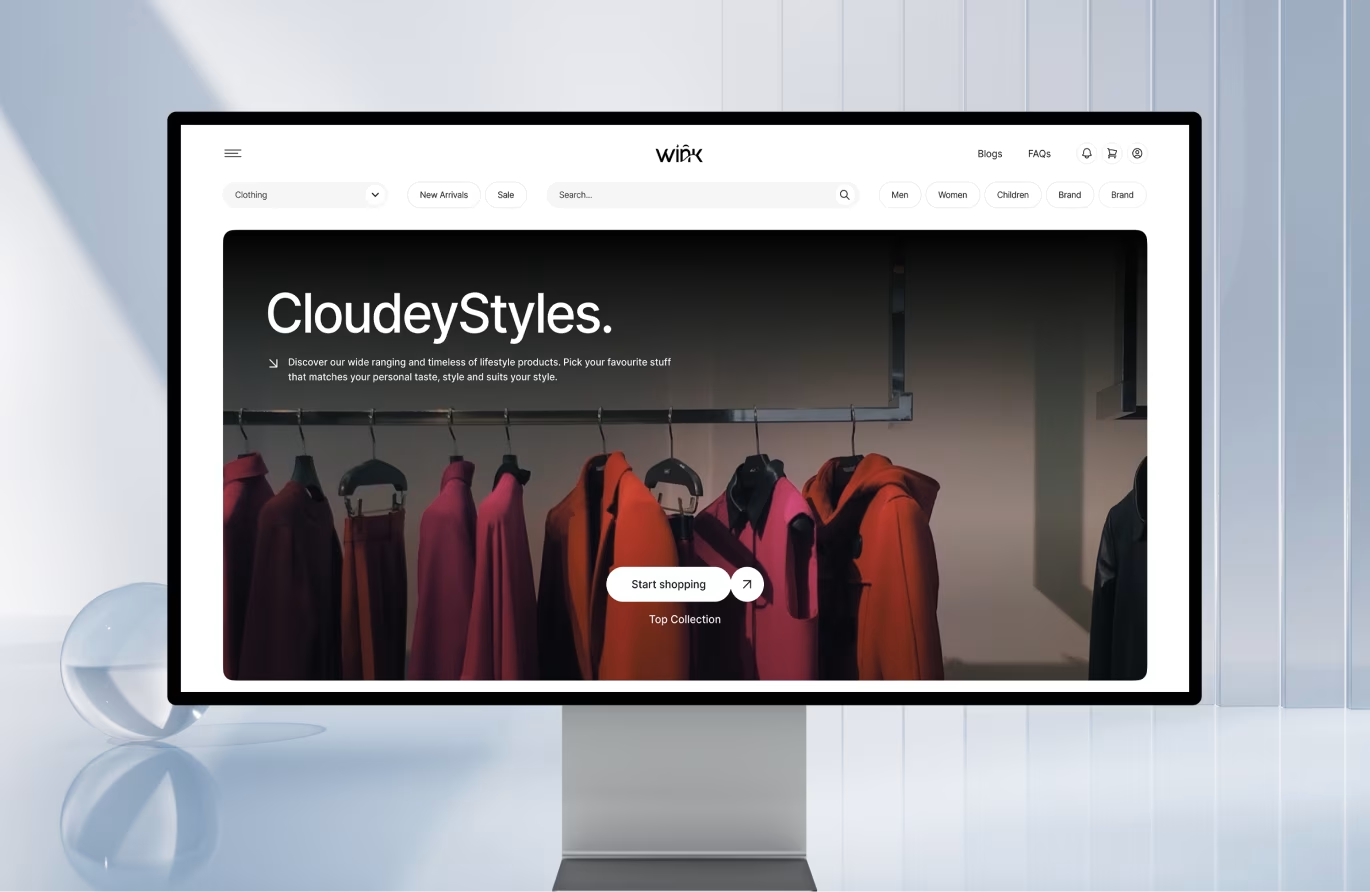
1. AI-Powered Personalization at Scale
Why It Matters: Generic shopping experiences no longer cut it. Customers expect personalized product recommendations, content, and offers based on their behavior and preferences.
The Trend: E-commerce startups are leveraging AI to deliver dynamic, personalized experiences. This includes intelligent product recommendations, personalized homepage layouts, dynamic pricing displays, and customized search results based on user behavior.
Implementation Strategy: Start with basic personalization using browsing history and purchase data. Tools like Dynamic Yield or Nosto help smaller startups implement enterprise-level personalization without massive development resources. Show recently viewed products, recommend complementary items, and create personalized email campaigns that reflect individual shopping patterns.
Real Impact: E-commerce sites with personalized experiences see 20% higher sales on average. Amazon attributes 35% of its revenue to its recommendation engine.

2. Micro-Interactions and Animated Feedback
Why It Matters: Subtle animations provide feedback, guide user attention, and make interfaces feel responsive and alive. They reduce uncertainty during critical moments like adding items to cart or processing payments.
The Trend: Modern e-commerce sites incorporate micro-interactions throughout the shopping journey—button hover effects, loading animations, cart icon updates when items are added, success confirmations with subtle motion, and smooth transitions between states.
Implementation Strategy: Focus on functional animations that improve usability rather than decorative effects. Use CSS animations or lightweight JavaScript libraries like GSAP. Keep animations under 300ms to maintain perceived speed. Ensure they enhance rather than distract from the shopping experience.
Orbix Approach: For a fashion e-commerce client, we added micro-interactions to size selection buttons and cart updates. These subtle enhancements increased add-to-cart rates by 12% and reduced cart abandonment by 8%.
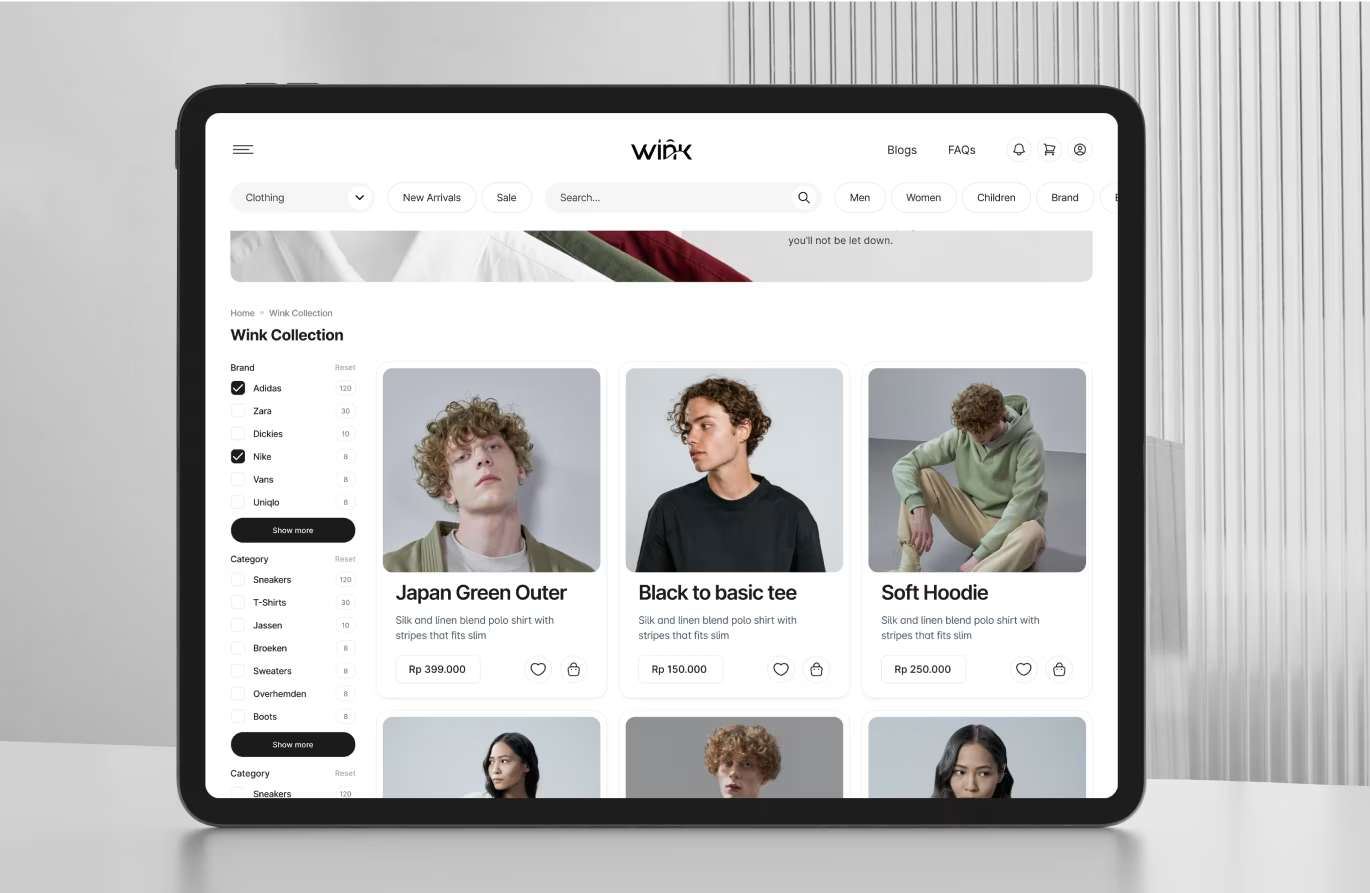
3. Advanced Product Visualization
Why It Matters: Online shoppers can't physically touch products, creating hesitation before purchase. Superior product visualization bridges this gap and builds confidence.
The Trend: Leading e-commerce startups now offer 360-degree product views, augmented reality (AR) try-before-you-buy experiences, zoom capabilities showing fine details, video demonstrations showing products in use, and size comparison tools.
Implementation Strategy: Start with high-quality images from multiple angles. Tools like Shopify's 3D model support or platforms like Threekit make advanced visualization accessible to startups. For apparel and accessories, consider AR solutions like Snap's AR Shopping or Apple's AR Quick Look.
Business Case: Products with AR visualization see 94% higher conversion rates according to Shopify data. Customers who interact with AR features are 65% more likely to make purchases.
4. Simplified, Distraction-Free Checkout
Why It Matters: The average cart abandonment rate is 70%. Complex checkout processes are the leading cause. Every unnecessary step costs you revenue.
The Trend: Successful e-commerce startups are streamlining checkout with one-page or two-step processes, guest checkout options, autofill for shipping and payment information, progress indicators showing checkout steps, and mobile wallet integration (Apple Pay, Google Pay).
Implementation Strategy: Minimize form fields to absolute essentials. Display trust signals like security badges and return policies prominently. Show total costs including shipping early to avoid surprise abandonment. Implement real-time validation to catch errors immediately.
Data Point: Baymard Institute research shows optimized checkout design can increase conversion rates by 35%. Single-page checkout typically outperforms multi-page by 21%.
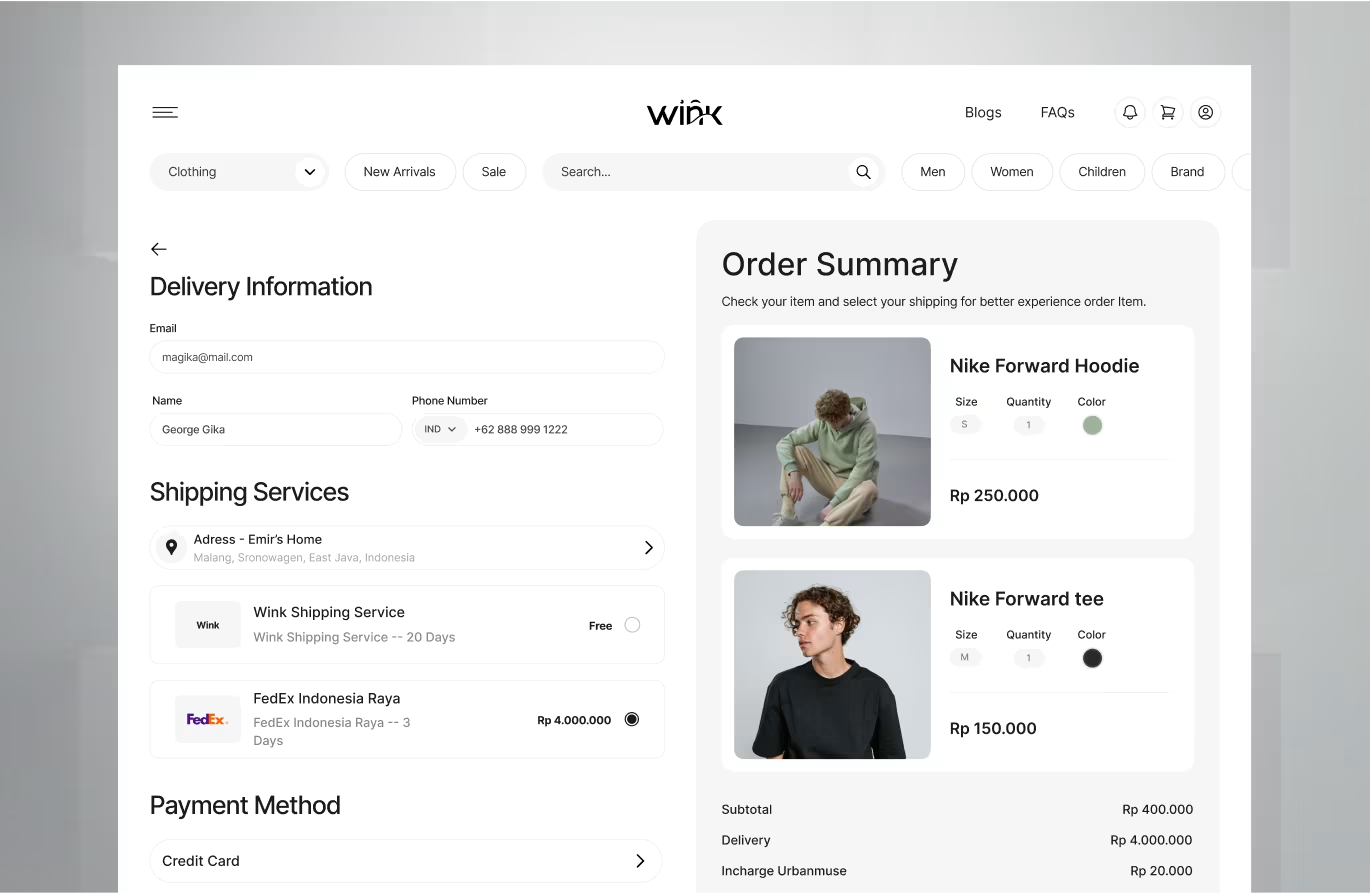
5. Mobile-First Design with Progressive Web App Features
Why It Matters: Mobile commerce now accounts for 73% of all e-commerce sales. Sites that don't prioritize mobile experience lose the majority of potential customers.
The Trend: E-commerce startups are adopting mobile-first design philosophies and implementing Progressive Web App (PWA) features like offline browsing, push notifications for abandoned carts and sales, add-to-home-screen capability, and app-like navigation and interactions.
Implementation Strategy: Design for mobile screens first, then scale up to desktop. Implement responsive images that load appropriate sizes for each device. Use service workers to cache critical resources for faster repeat visits. Consider PWA frameworks like Next.js or Nuxt.js that make implementation straightforward.
Success Story: Alibaba's PWA resulted in 76% higher conversions across browsers. Users spend 74% more time on PWA experiences compared to traditional mobile web.
6. Strategic Use of White Space and Minimalism
Why It Matters: Cluttered product pages overwhelm shoppers and reduce focus on key elements like product images, descriptions, and call-to-action buttons.
The Trend: Modern e-commerce design embraces generous white space, clean layouts with clear visual hierarchy, minimalist navigation that doesn't compete with products, strategic use of color to guide attention, and product-focused pages that eliminate distractions.
Implementation Strategy: Use white space to create breathing room around important elements. Limit color palettes to 3-4 colors plus neutrals. Make "Add to Cart" buttons the most prominent element on product pages. Remove unnecessary sidebar clutter and excessive promotional banners.
Example: Apple's product pages exemplify effective minimalism—generous white space, stunning product photography, and clear calls-to-action drive their industry-leading conversion rates.
7. Social Proof and User-Generated Content
Why It Matters: 93% of consumers say online reviews influence their purchasing decisions. Authentic content from real customers builds trust more effectively than polished marketing.
The Trend: E-commerce startups prominently display customer reviews and ratings, user-generated photos of products in real settings, video testimonials and unboxing content, real-time purchase notifications showing social activity, and Instagram integration showcasing customer photos.
Implementation Strategy: Make reviews highly visible on product pages. Send automated review requests 7-14 days after delivery when customers have had time to use products. Incentivize photo reviews with discount codes. Use platforms like Yotpo or Trustpilot to manage and display reviews effectively.
Conversion Impact: Displaying reviews can increase conversion rates by up to 270%. Products with 50+ reviews see 4.6% higher conversion rates than those without reviews.
8. Sustainability Messaging and Transparency
Why It Matters: 73% of millennials and Gen Z consumers will pay more for sustainable products. Environmental consciousness influences purchasing decisions increasingly.
The Trend: E-commerce sites now highlight sustainable materials and ethical manufacturing, carbon-neutral shipping options, packaging reduction initiatives, supply chain transparency, and environmental impact metrics for products.
Implementation Strategy: Create dedicated sustainability pages explaining your commitments. Add badges or icons to eco-friendly products. Calculate and display carbon footprint for shipping options. Share behind-the-scenes content about your sustainable practices.
Orbix Implementation: We helped a sustainable fashion startup integrate carbon footprint calculators and transparency features into their product pages, resulting in 28% higher conversion rates for their eco-conscious target audience.
9. Voice Commerce Optimization
Why It Matters: Voice shopping is projected to reach $40 billion by 2025. As smart speakers become ubiquitous, voice-optimized experiences capture growing market share.
The Trend: Forward-thinking e-commerce startups are optimizing product descriptions for voice search, implementing conversational product finders, creating voice-activated shopping lists, and ensuring site content answers natural language questions.
Implementation Strategy: Use natural language in product descriptions and FAQ sections. Structure content to answer common voice queries like "best [product] under $50." Implement schema markup to help voice assistants understand your content. Consider voice search analytics to understand how users find your products.
10. Advanced Search and Filtering
Why It Matters: Customers who use search convert at 4-6x higher rates than those who don't. Poor search functionality causes 30% of visitors to abandon sites.
The Trend: Modern e-commerce search includes autocomplete with product suggestions, visual search allowing image-based product finding, natural language processing understanding descriptive queries, faceted filtering with multiple criteria, and search result sorting by relevance, price, and popularity.
Implementation Strategy: Implement robust search platforms like Algolia or Elasticsearch. Include typo tolerance and synonym understanding. Show search suggestions immediately as users type. Allow filtering by multiple attributes simultaneously. Display "no results" pages with alternative suggestions.
11. Dark Mode and Customizable Interfaces
Why It Matters: Dark mode reduces eye strain and saves battery life on mobile devices. Offering customization respects user preferences and improves accessibility.
The Trend: E-commerce sites now offer theme switching between light and dark modes, customizable font sizes for accessibility, layout preferences for list vs grid product views, and saved preferences across sessions.
Implementation Strategy: Use CSS custom properties to create theme variables easily switchable between light and dark. Respect system preferences using prefers-color-scheme media query. Store preferences in localStorage for consistent experiences across visits.
12. Subscription and Membership Models Integration
Why It Matters: Subscription commerce grows 3-4x faster than traditional e-commerce. Recurring revenue provides business stability and increases customer lifetime value.
The Trend: E-commerce startups integrate subscription options for consumable products, membership programs with exclusive benefits, early access to new products for subscribers, and flexible subscription management for customers.
Implementation Strategy: Make subscription options visible but not pushy on product pages. Offer discounts for subscription purchases (typically 10-15%). Provide easy subscription management tools. Consider platforms like Recharge or Bold Subscriptions for Shopify stores.
Implementing E-Commerce Web Design Trends Strategically
Not every trend suits every business. Strategic implementation requires:
Know Your Audience: Conduct user research to understand which trends resonate with your target customers. Analytics reveal what drives conversions for your specific audience.
Start Small, Test Often: A/B test design changes before full implementation. Use tools like Google Optimize or VWO to validate improvements with real data.
Prioritize Performance: Beautiful designs mean nothing if they load slowly. Aim for under 3-second load times on mobile. Use tools like Google PageSpeed Insights to identify bottlenecks.
Measure Impact: Track key metrics including conversion rate, average order value, cart abandonment rate, and time on site. Connect design changes to business outcomes.
Ready to Transform Your E-Commerce Experience?
Implementing cutting-edge web design trends requires expertise in both aesthetics and conversion optimization. The most successful e-commerce startups balance innovation with proven usability principles.
At Orbix Studio, we specialize in designing e-commerce experiences that don't just look stunning—they drive measurable business results. Our team has helped numerous startups implement these trends strategically, improving conversion rates by an average of 40% and increasing average order values by 25%.
Our E-Commerce Design Services:
- Conversion-Focused Design Audits: Identify opportunities to improve your existing store
- Custom E-Commerce Design: Shopify, WooCommerce, or custom platform development
- A/B Testing Programs: Data-driven optimization of key conversion points
- Mobile Commerce Optimization: Ensure seamless mobile shopping experiences




